Sun Joe 24V-HT22-CT-RM Handleiding
Sun Joe
Heggenschaar
24V-HT22-CT-RM
Bekijk gratis de handleiding van Sun Joe 24V-HT22-CT-RM (20 pagina’s), behorend tot de categorie Heggenschaar. Deze gids werd als nuttig beoordeeld door 52 mensen en kreeg gemiddeld 4.4 sterren uit 26.5 reviews. Heb je een vraag over Sun Joe 24V-HT22-CT-RM of wil je andere gebruikers van dit product iets vragen? Stel een vraag
Pagina 1/20

A Division of Snow Joe
®, LLC
OPERATOR’S MANUAL
Model 24V-HT22-CT-RM Form No. SJ-24V-HT22-CT-RM-880E-MR2-V2
R
CORDLESS HEDGE TRIMMER – TOOL ONLY
24-VOLT MAX* | 22-INCH

© 2021 by Snow Joe
®, LLC
All rights reserved. Original instructions. SAVE THESE INSTRUCTIONS
2
A Division of Snow Joe
®, LLC
OPERATOR’S MANUAL
Model 24V-HT22-CT-RM Form No. SJ-24V-HT22-CT-RM-880E-MR2-V2
R
CORDLESS HEDGE TRIMMER – TOOL ONLY
24-VOLT MAX* | 22- INCH
IMPORTANT!
Safety Instructions
All Operators Must Read These
Instructions Before Use
Always follow these safety guidelines. Failure to do so may
result in serious bodily injury or death.
General Power Tool Safety
Warnings
m WARNING Read all safety warnings and all
instructions. Failure to follow the warnings and instructions
may result in electric shock, re and/or serious injury.
Save all warnings and instructions for future reference.
The term "power tool" in the warnings refers to your mains-
operated (corded) power tool or battery-operated (cordless)
power tool.
mDANGER! This indicates a hazardous situation, which,
if not followed, will result in serious injury or death.
mWARNING! This indicates a hazardous situation, which,
if not followed, could result in serious injury or death.
mCAUTION! This indicates a hazardous situation, which,
if not followed, could result in minor or moderate injury.
Work Area Safety
1. Keep work area clean and well lit – Cluttered or dark
areas invite accidents.
2. Do not operate power tools in explosive atmospheres,
such as in the presence of ammable liquids, gases
or dust – Power tools create sparks which may ignite the
dust or fumes.
3. Keep children and bystanders away while operating a
power tool – Distractions can cause you to lose control.
Electrical Safety
1. Power tool plugs must match the outlet. Never modify
the plug in any way. Do not use any adapter plugs with
earthed (grounded) power tools. Unmodied plugs and
matching outlets will reduce risk of electric shock.
2. Avoid body contact with earthed or grounded
surfaces, such as pipes, radiators, ranges and
refrigerators – There is an increased risk of electric shock
if your body is earthed or grounded.
3. Do not expose power tools to rain or wet conditions
– Water entering a power tool will increase the risk of
electric shock.
4. Do not abuse the cord. Never use the cord for
carrying, pulling or unplugging the power tool.
Keep cord away from heat, oil, sharp edges or moving
parts. Damaged or entangled cords increase the risk of
electric shock.
5. When operating a power tool outdoors, use an
extension cord suitable for outdoor use. Use of a cord
suitable for outdoor use reduces the risk of electric shock.
6. If operating a power tool in a damp location is
unavoidable, use a residual current device (RCD)
protected supply. Use of an RCD reduces the risk of
electric shock.
Personal Safety
1. Stay alert, watch what you are doing and use common
sense when operating a power tool. Do not use a
power tool while you are tired or under the inuence
of drugs, alcohol or medication – A moment of
inattention while operating power tools may result in
serious personal injury.
2. Always wear Use safety equipment.
eye protection – Safety equipment such as dust mask,
non-skid safety shoes, hard hat, or hearing protection
used for appropriate conditions will reduce personal
injuries.
3. Avoid accidental starting. Ensure the switch is in the
o-position before plugging in – Carrying power tools
with your nger on the switch or plugging in power tools
that have the switch on invites accidents.
4. Remove any adjusting key or wrench before
turning the power tool on – A wrench or a key left
attached to a rotating part of the power tool may result
in personal injury.
5. Do not overreach. Keep proper footing and balance at
all times – This enables better control of the power tool in
unexpected situations.
6. Dress properly. Do not wear loose clothing or jewelry.
Keep your hair, clothing and gloves away from moving
parts – Loose clothes, jewelry or long hair can be caught
in moving parts.

3
7. If devices are provided for the connection of dust
extraction and collection facilities, ensure these are
connected and properly used – Use of dust collection
can reduce dust-related hazards.
Power Tool Use + Care
1. Do not force the power tool. Use the correct power
tool for your application – The correct power tool will
do the job better and safer at the rate for which it was
designed.
2. Do not use the power tool if the switch does not turn
it on and o – Any power tool that cannot be controlled
with the switch is dangerous and must be repaired.
3. Disconnect the battery pack from the power
tool before making any adjustments, changing
accessories, or storing power tools –
Such preventive safety measures reduce the risk of
starting the power tool accidentally.
4. Store idle power tools out of the reach of children and
do not allow persons unfamiliar with the power tool or
these instructions to operate the power tool – Power
tools are dangerous in the hands of untrained users.
5. Maintain power tools. Check for misalignment or
binding of moving parts, breakage of parts and any
other condition that may aect the power tool’s
operation. If damaged, have the power tool repaired
before use – Many accidents are caused by poorly
maintained power tools.
6. Keep cutting tools sharp and clean – Properly
maintained cutting tools with sharp cutting edges are less
likely to bind and are easier to control.
7. Use the power tool, accessories and tool bits etc.,
in accordance with these instructions and in the
manner intended for the particular type of power
tool, taking into account the working conditions and
the work to be performed – Use of the power tool for
operations dierent from those intended could result in a
hazardous situation.
Battery tool use and care
1. Recharge only with the charger specied by the
manufacturer. A charger that is suitable for one type
of battery pack may create a risk of re when used with
another battery pack.
2. Use power tools only with specically designated
battery packs. Use of any other battery packs may create
a risk of injury and re.
3. When battery pack is not in use, keep it away from
other metal objects, like paper clips, coins, keys, nails,
screws or other small metal objects, that can make a
connection from one terminal to another. Shorting the
battery terminals together may cause burns or a re.
4. Under abusive conditions, liquid may be ejected from
the battery; avoid contact. If contact accidentally occurs,
ush with water. If liquid contacts eyes, additionally seek
medical help. Liquid ejected from the battery may cause
irritation or burns.
5. The battery pack supplied with your hedge trimmer is only
partially charged. The battery pack has to be charged
completely before you use the tool for the rst time.
6. For optimum battery performance, avoid low discharge
cycles by charging the battery pack frequently.
7. Store the battery pack in a cool place, ideally at 77°F
(25°C) and charged fully.
8. Lithium-ion batteries are subject to a natural aging
process. The battery pack must be replaced at the latest
when its capacity falls to just 80% of its capacity when
new. Weakened cells in an aged battery pack are no
longer capable of meeting the high power requirements
needed for the proper operation of your hedge trimmer,
and therefore pose a safety risk.
9. Do not throw battery packs into an open re as this poses
a risk of explosion.
10. Do not ignite the battery pack or expose it to re.
11. Do not exhaustively discharge batteries. Exhaustive
discharge will damage the battery cells. The most
common cause of exhaustive discharge is lengthy storage
or non-use of partially discharged batteries. Stop working
as soon as the performance of the battery falls noticeably
or the electronic protection system triggers.
Place the battery pack in storage only after it has been
fully charged.
12. Protect batteries and the tool from overloads. Overloads
will quickly result in overheating and cell damage inside
the battery housing even if this overheating is not
apparent externally.
13. Avoid damage and shocks. Immediately replace batteries
that have been dropped from a height of more than one
meter or those that have been exposed to violent shocks,
even if the housing of the battery pack appears to be
undamaged. The battery cells inside the battery may have
suered serious damage. In such instances, please read
the waste disposal information for proper battery disposal.
14. If the battery pack suers overloading and overheating,
the integrated protective cuto will switch o the
equipment for safety reasons.
IMPORTANT! Do not press the ON/OFF switch any more
if the protective cut-o has been activated. This may
damage the battery pack.
15. Use appliances only with specically designated battery
packs. Use of any other battery packs may create a risk of
injury and re.
16. Under abusive conditions, liquid may be ejected from
the battery; avoid contact. If contact accidentally occurs,
ush with water. If liquid contacts eyes, additionally seek
medical help. Liquid ejected from the battery may cause
irritation or burns.
17. Do not use a battery pack or appliance that is damaged
or modied. Damaged or modied batteries may exhibit
unpredictable behavior resulting in re, explosion or risk of
injury.
18. Do not expose a battery pack or appliance to re or
excessive temperature. Exposure to re or temperature
above 266ºF (130°C) may cause explosion.
Product specificaties
| Merk: | Sun Joe |
| Categorie: | Heggenschaar |
| Model: | 24V-HT22-CT-RM |
Heb je hulp nodig?
Als je hulp nodig hebt met Sun Joe 24V-HT22-CT-RM stel dan hieronder een vraag en andere gebruikers zullen je antwoorden
Handleiding Heggenschaar Sun Joe

13 November 2024

13 November 2024

13 Juni 2023

5 Juni 2023

26 Mei 2023

13 Mei 2023

4 Mei 2023

3 Mei 2023

23 April 2023

21 April 2023
Handleiding Heggenschaar
- Texas
- Garden Feelings
- Trotec
- Echo
- Topcraft
- Hayter
- Robust
- Garden Groom
- Bosch
- WOLF-Garten
- Varo
- Yamazen
- Vonroc
- Skil
- Hoberg
Nieuwste handleidingen voor Heggenschaar
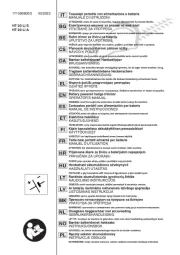
4 September 2025
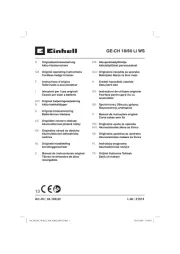
3 September 2025
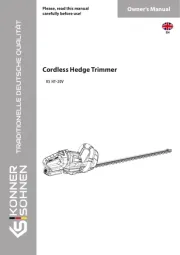
1 September 2025
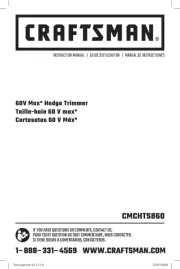
1 September 2025
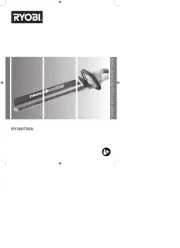
1 September 2025
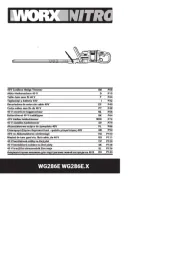
1 September 2025
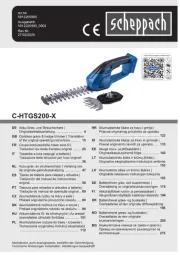
25 Augustus 2025
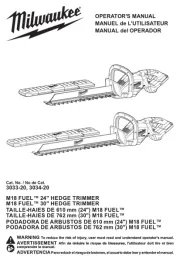
18 Augustus 2025
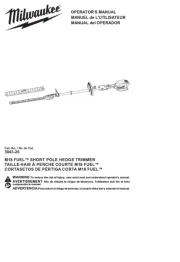
18 Augustus 2025
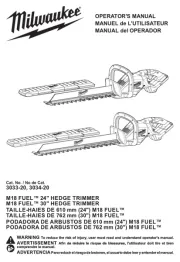
18 Augustus 2025